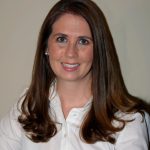
Funded by Mark and Cindy Pentecost in memory of Will DeGregorio
Ewing sarcoma relies on decades-old chemotherapy options, where aggressive treatments are met with poor disease outcomes. Ewing sarcoma is a devastating disease that affects mostly young adults age 10-16, but children under the age 10 can also develop this deadly illness. Due to the disease’s classification as a rare disease (less than 10,000 cases/year), it has not received the attention of the research community like other more common cancers; therefore, it is in desperate need of intense research and development of new therapeutic options. One of the key observations of Ewing sarcoma made back in the 1930’s is the accumulation of large amount of glycogen. Glycogen is a sugar molecule that our body uses to store energy; only specific organs such as the liver and muscle are capable of producing glycogen. The ability of Ewing sarcoma tumors to store large amount of glycogen has been forgotten until now. This proposal aims to understand the reason behind large glycogen accumulation in Ewing sarcoma and exploit the glycogen deposits as a possible drug target for the treatment of Ewing sarcoma. Dr. Sun has established ongoing collaborations with pediatric physicians to study the basis of glycogen targeting agents for the treatment of Ewing’s sarcoma, and to define early diagnostic biomarkers and evaluation of response to therapy. The long-term goal is to establish treatment options using one or multiple modalities as tailored therapies against Ewing’s sarcoma’s metabolic vulnerability.

2017 V Foundation Wine Celebration Volunteer Grant in honor of Susan Leick and Joe McCrary
Lung cancer is the leading cause of cancer-related deaths worldwide, and is a very complex disease with different cell types that make up each tumor. Immunotherapy is ground-breaking because it is able to cure some patients with late stage tumors. However, the number of patients that have this great response is still low. In this proposal, we will test the combination of a second drug with immunotherapy to increase the likelihood that squamous lung tumors will respond to treatment. To do this, we will use two mouse models of squamous cell carcinoma. These models are ideal for testing immunotherapy because they have intact immune systems and have many features of the human disease. We will test whether the second therapy changes the cell types that make up the tumor, and whether these changes lead to better therapy outcomes. If our results show that the second drug can boost the immunotherapy, we can rapidly transition this work to clinical trials in human lung cancer patients.

Funded by Louisville Friends of V

Funded by the Louisville Friends of V

Funded by Louisville Friends of V

Funded by the Louisville Friends of V
Lung cancer is responsible for more cancer deaths each year than breast, colon, and prostate cancer combined. Part of the problem resides in the lack of symptoms associated with lung cancer – many patients already have advanced disease on presentation. Currently, the best method for identifying lung cancer involves computed tomography (CT scans) of the chest; while this has been demonstrated to improve cancer mortality by identifying earlier stage cancers, it also identifies multiple nodules within the lungs that are not malignant. In an effort to more precisely diagnose early stage lung cancer in at risk individuals, our group has turned to breath analysis. Human breath contains thousands of compounds from atomic hydrogen to complex biological molecules. Recently a class of organic compounds known as carbonyls have been associated with lung cancer. Our research group has devised a simple method to extract and measure these compounds from a single breath. We have identified four specific cancer markers among these compounds – the chance of having cancer increases with the number of elevated cancer markers identified in the patient’s breath. The proposed project seeks to determine if breath analysis is as effective as CT scan in screening for lung cancer by comparing the two methods in the same patients. We will also study patients after a cancer has been resected to determine if recurrence of cancer can be effectively detected by breath analysis relative to CT scanning.

Funded by Papa John’s International

Funded by Papa John’s International






